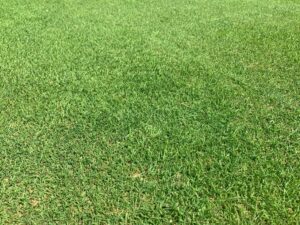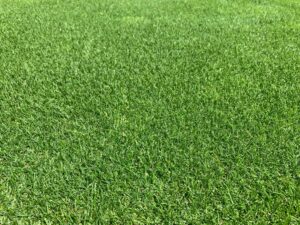From tee to green: Exploring the different types of grass at Augusta National
Every April, the sporting world turns its eyes to the pristine fairways of Augusta National, home of the Masters Tournament. This course is not just a backdrop for golf’s finest hour, but a horticultural masterpiece woven with the most meticulously kept grasses in the sport. Within this emerald oasis, every blade is a testament to tradition and precision.
But to appreciate the verdant canvas that is Augusta National, one must delve into its storied past and understand the evolution of this iconic venue. From the club’s inception in 1933 to the hallowed Masters Tournament, each fairway, each green tells a tale of golf history, of legends past and present, and of the sport’s unwavering commitment to excellence.
This article will guide you through the plush and varied tapestry of grasses that quilt Augusta National Golf Club. From the challenges involved in the care and maintenance, to the role of the dedicated grounds crew, we’ll explore what goes into preparing one of the most admired stages in golf and how it influences course designs worldwide. Join us on a green journey from tee to green.
The History of Augusta National Golf Club
The prestigious Augusta National Golf Club, with its inception dating back to 1925, remained a distant dream until the golf legend Bobby Jones set his sight on its serene, natural landscape. It wasn’t merely the undulating terrain that captivated Jones, but the mystical allure of the property that beckoned. Bobby Jones, alongside architect Alister MacKenzie, forged a masterpiece focused on thought-provoking strategic play, rather than simply placing a premium on avoiding hazards.
This golfing sanctuary, now synonymous with the Masters Tournament, is not solely about the sport—it’s a visual spectacle too. Augusta’s bunkers, with their radiant white sand sourced from Spruce Pine, North Carolina, provide a stark, beautiful contrast to the immaculate greens and fairways. A spectacle of colors comes alive as over a thousand azaleas burst into bloom on the renowned 13th hole, aptly nicknamed “Azalea,” amidst the Masters’ springtime setting.
The history of Augusta National is a tapestry woven from a love for the game, an eye for beauty, and a commitment to challenge. It stands today not just as a golf course, but as a monument to the vision of Clifford Roberts and Bobby Jones—a timeless arena where golf legends are made.
The Masters Tournament
One of golf’s most prestigious events, The Masters Tournament at the Augusta National Golf Club, captivates golf fans worldwide with traditions like the Green Jackets and opening tee shots by honorary starters. A masterpiece designed by Clifford Roberts and Bobby Jones, Augusta National flaunts pristine fairways and the iconic 12th green at Rae’s Creek.
Regarding grass types, Augusta National is renowned for its immaculate creeping bentgrass greens that thrive in cooler conditions, requiring considerable upkeep through the hotter months. The perennial ryegrass that blankets the course from tee to green ensures that golf balls roll smoothly over the famously meticulous terrain. Furthermore, the unique bunker sand, notably at the 10th fairway, influences the game’s tactile elements, sometimes acting as a waste product that tests even the most skilled players.
Winning at Augusta brings immense prestige along with the celebrated Green Jacket. This includes a replica clubhouse trophy, with additional accolades for daily achievements, such as crystal vases for low scores, bowls for holes-in-one, and glasses for eagles. Every hole, from Magnolia Lane to the strategic play at the 17th and challenging 18th holes, is steeped in history and allure, making The Masters a golf tournament like no other.
The Pristine Fairways and Greens
The Augusta National Golf Club, known for hosting the Masters Tournament, is just as famous for its impeccably maintained turf as it is for its Green Jackets and historical moments. The greens are composed of creeping bentgrass, a cool-season grass variety favored for its fine texture and consistent putting surfaces. However, this type of grass requires diligent care, especially during the warm months in Georgia, to maintain its pristine appearance and the smooth roll for which Augusta National is legendary.
Accentuated by the vivid green hues, the greens are the focal point of the course, demanding the utmost attention from the grounds crew. This is complemented by the equally immaculate fairways, which many golfers consider a dream to play on. These fairways are product of stringent, high-standard turf maintenance practices that work year-round to ensure that every blade of grass is at the height of perfection during the early spring timeframe of the Masters.
The Care and Maintenance of Augusta National’s Grass
The primary grass blanketing the tees and fairways of Augusta National is Bermuda grass, selected for its durability and resilience in the face of Georgia’s balmy summers. Each fall, as the tournament season approaches, a process of overseeding occurs, where perennial ryegrass is sown into the turf. This ensures that even when Bermuda grass enters dormancy and fades in color, the course remains a lush, vibrant green.
The overseeding process is not without its challenges; it requires the Bermuda grass to be scalped down nearly to the soil, making room for the cool-season ryegrass to take root. This labor-intensive task is critical for the transition, providing golfers with optimal playing conditions associated with Augusta’s fairways and tees. The ryegrass brings with it superior color and a dense, upright growth habit, perfect for the demands of the game.
The Different Types of Grass Used at Augusta National
At the heart of Augusta’s legendary playability is a strategic blend of grass types, each selected for its particular strengths and suited to specific areas of the course. While Bermuda grass underlays the tees and fairways, it’s the overseeding withperennial ryegrass that defines the winter months, ensuring that the playing surfaces are in top condition even when Bermuda goes dormant.
Come spring, the Masters Tournament showcases the greens at their best, with the creeping bentgrass providing golfers with smooth, reliable putting surfaces. Unlike Bermuda grass, bentgrass is favored for cooler weather, which is advantageous for the early springtime conditions during the tournament. This careful orchestration of grass types not only presents the ideal aesthetic but also delivers consistent, predictable conditions that challenge the world’s best golfers.

Creeping Bentgrass at the Sports Turf Research Institute in Bingley, Yorkshire

Perennial Ryegrass
Behind the Scenes at Augusta National
Augusta National Golf Club is shrouded in secrecy and prestige, with a grounds maintenance approach that is as refined as the techniques of the players who grace its fairways. For enthusiasts and golf fans, Augusta National’s commitment to excellence goes far beyond the eye-catching azaleas and towering pines; it delves into the turf itself. The club takes dramatic steps to replace its indigenous Bermudagrass with a meticulously maintained overseeded bed of perennial ryegrass in preparation for the Masters Tournament. This commitment ensures the course is not only aesthetically pleasing but also plays consistently for the duration of the iconic event.
Behind the scenes, there’s an unwritten rule of discretion. Staff and visitors alike are known for their tight-lipped nature when it comes to the highly controlled maintenance practices at Augusta National. This extends to the specifics of the grass heights of cut across various parts of the course—details that remain closely guarded secrets. The club also implements advanced drainage systems beneath the surface, allowing for superior water absorption and ensuring the smooth management of the grounds.
With the industry’s evolution in turfgrass types, Augusta National has been a benefactor of improved perennial ryegrass cultivars, enhancing both the playability for the golfers and the visual splendor that television broadcasts bring into homes around the world.
The Intricacies of Course Setup for the Masters
One of the key components to Augusta National Golf Club’s immaculate presentation is its course setup, specifically tailored for the Masters Tournament. To protect the course from the harsh, humid summers of Augusta, the club closes in the off-season, minimizing wear and tear during these peak months. Such careful protection extends to the precious creeping bentgrass greens, which receive special attention to combat the heat, given their preference for cooler climates.
At the heart of Augusta’s course management is a world-class maintenance facility, equipped with meeting rooms, a comprehensive training area, a soil lab, and a weather station, ensuring no stone is left unturned in the pursuit of perfection. The maintenance philosophy leans heavily on preemptive care, a concept underscored by an irrigation system that stands at the forefront of technology. In addition, the course design strategically incorporates challenging holes, such as the renowned Amen Corner, which is among the second nine. This area exemplifies the attention to detail and the grandeur that defines Augusta National.
The Role of Augusta National’s Grounds Crew
Augusta National’s grounds crew operates with military precision, their labor a testament to the flawless grass on display each spring. The tournament’s Agronomy Team pools together the finest minds in the turfgrass industry, ensuring the greens remain resilient and lush, year after year. Utilizing the latest in ground-care technology, including the SubAir system, they meticulously manage soil moisture and temperature to create the optimal playing conditions.
The crew’s efforts are supported by a state-of-the-art maintenance facility, indicative of Augusta National’s commitment to environmental care. This facility serves as a nerve center for course management, housing not just maintenance equipment, but also providing the infrastructure for environmental stewardship with advanced irrigation and soil management systems. The advancements in turfgrass technology and cultivation utilized by the grounds crew do not just maintain, but enhance, the legendary aesthetic of Augusta National.
The Impact of Augusta National on Golf Course Design
Since its inception, Augusta National Golf Club has been a cornerstone in the world of golf course design. The autocratic yet visionary leadership of Clifford Roberts played a significant role in establishing its legendary status. Working alongside Roberts was the design prowess of Alister MacKenzie and co-founder Bobby Jones, whose collaboration gave life to Augusta’s strategic layout.
Unlike the punishing designs of some traditional courses, Augusta National was conceived with strategic gameplay in mind. It set out to reward smart play and to offer a range of shot-making options for golfers at every skill level. The course’s thoughtful design avoids gratuitous penalties, instead offering a fair, albeit challenging, test of golf. Augusta’s design legacy is characterized by an emphasis on thoughtful strategic elements that provide diverse challenges, ensuring its ongoing influence on the discipline of golf course architecture.